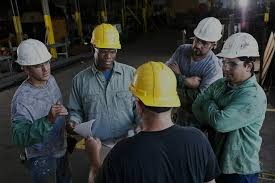How Can Businesses Keep Staff Safe Without Slowing Down? Smart Strategies That Actually Work
Creating a welcoming workplace where employees feel safe, respected, and protected isn’t just about checking off a few boxes during onboarding. It’s about building an environment where people can focus on doing great work—without worrying about preventable hazards, sketchy coworkers, or a lack of emergency planning. For business leaders, safety should be treated as an ongoing investment, not just a reactive move after something goes wrong. And the good news? There are clear steps companies can take to make safety part of the culture without making everything feel clinical or cold. Here’s a closer look at the practical and effective ways companies can create a safer environment for their teams—physically, mentally, and legally.
Prevent Slip and Fall Accidents at Work
If your workplace has hard floors, stairs, or entryways that get slick when it rains, you already know the risk. Common slip and fall accidents are one of the most frequent causes of injuries in the workplace, and they can happen in just about any industry. From warehouses and retail stores to normal office buildings and restaurants, one moment of carelessness or one neglected wet floor can lead to serious injuries, workers’ comp claims, and even lawsuits.
Preventing these incidents starts with a good look at your space. Are floors being cleaned regularly but also dried properly afterward? Do you have visible signage when there’s a spill or freshly mopped area? Is your lighting bright enough in high-traffic zones? These might sound like small details, but together they form a system that either catches potential hazards or allows them to become real problems.
Background Checks to Make a Workplace Safer
Every company wants to believe that the person they just hired is exactly who they claimed to be. But not everyone is upfront about their past, and that’s where options like PreSearch background check services play a key role. Using tools like the ones at PreSearch can help companies verify an applicant’s identity, employment history, criminal record, and other relevant details, giving employers the ability to make more informed decisions.
When used correctly, background checks aren’t about judging someone unfairly—they’re about reducing risk. If someone has a history of violence, harassment, theft, or fraud, and they’re placed in a position of trust, that decision could have serious consequences for your team. Safety in the workplace isn’t just about wet floors and locked doors. It’s also about making sure the people you bring in don’t pose a threat to others.
Clear Emergency Plans and Evacuation Procedures
Emergencies don’t schedule themselves neatly between lunch breaks and staff meetings. Fires, power outages, chemical spills, and natural disasters can disrupt business in seconds—and if your team doesn’t know what to do, chaos follows quickly. That’s why clear emergency planning isn’t optional. It’s essential.
Every business should have written procedures that explain exactly what to do during different types of emergencies. But those papers in a binder aren’t helpful unless employees know they exist and have practiced them. Regular drills and refreshers help make the steps second nature. Can everyone locate the nearest exit? Do they know how to report a fire or call for help during a medical emergency? Who’s responsible for guiding others to safety?
It’s also important to include plans for individuals with disabilities. Safety should never assume that everyone moves at the same pace or sees the same signage.
Train Managers to Spot Early Signs of Conflict or Distress
Not all safety risks are physical. A toxic work environment, unchecked bullying, or unaddressed mental health issues can be just as dangerous—and in some cases, even more damaging over time. One of the most effective ways to create a safer workplace is to ensure that team leaders and managers are trained to spot the early signs of conflict, emotional distress, or unhealthy patterns.
This doesn’t mean turning supervisors into therapists. But it does mean helping them understand how to create a culture of psychological safety. Are employees encouraged to speak up when something feels off? Do they know who to turn to if they experience harassment or feel overwhelmed? Are there systems in place for anonymous reporting?
When managers learn how to check in with their teams regularly—not just on deadlines, but on wellbeing—it builds trust.
READ MORE : The Ultimate Checklist for Choosing a Financial Advisor in Southlake
Ergonomics as a Safety Priority
Too often, businesses treat ergonomics like a luxury or something reserved for fancy tech offices. But ignoring ergonomics can lead to long-term injuries that are expensive, painful, and completely preventable. Whether it’s warehouse workers lifting heavy items without support, or office staff hunched over laptops for eight hours a day, poor ergonomics slowly wears people down—and those injuries can be some of the hardest to recover from.
Smart businesses think about workstation design, lifting techniques, break schedules, and tools that reduce strain. Ergonomic workspaces including adjustable chairs, keyboard trays, standing desks, and monitor risers can all help people do their jobs without slowly injuring themselves. Even simple solutions like frequent stretch breaks or rotating physical tasks can make a huge difference over time.

